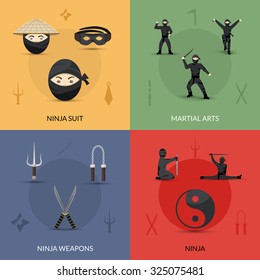Checking Out The Rich Heritage And Spiritual Dimension Of Martial Arts: A Thorough Assessment
Checking Out The Rich Heritage And Spiritual Dimension Of Martial Arts: A Thorough Assessment
Blog Article
Material Writer-Fyhn Francis
Step into the old globe where martial arts were born out of necessity in varied regions. Cultures crafted one-of-a-kind fighting styles linked with historic contexts. Strategies evolved over centuries via devoted practice and cultural exchanges. Today, contemporary martial arts mix typical elements for optimal efficiency. Philosophically, martial arts emphasize technique, self-improvement, and consistency. Regard, humbleness, and balance are fundamental concepts guiding experts in the direction of development and strength. Check out https://champion-martial-arts-for65310.blog-gold.com/38620952/investigate-the-transformative-effects-of-fighting-styles-on-your-youngster-s-life-concentrating-on-the-advancement-of-self-confidence-and-character-from-an-early-age-utilize-their-complete-potential-today of this rich history and viewpoint to uncover the extensive impacts shaping this enduring discipline.
Beginnings of Fighting Style
Fighting style originated in different areas worldwide, progressing as sensible battle systems to resist risks. martial arts child with autism fighting styles were developed out of necessity, with each culture crafting strategies suited to their unique environments and challenges. From the grappling arts of Jujutsu in Japan to the striking strategies of Kung Fu in China, martial arts were deeply linked with the historical, social, and social fabric of their respective cultures.
In Japan, the samurai class polished martial arts like Kenjutsu, the art of the sword, which later advanced into the much more popularized kind of Kendo. At web page , in Brazil, Capoeira became a mix of dancing and fight, produced by enslaved Africans as a means to withstand injustice. Each martial art lugs with it a rich background and approach, showing the worths and beliefs of the people that exercised them.
As you look into the beginnings of martial arts, you reveal a tapestry of human ingenuity, strength, and the stubborn spirit of warriors throughout time.
Advancement of Strategies
With centuries of method and improvement, fight techniques within different martial arts have actually undergone a profound advancement. From old designs like Kung Fu and Karate to a lot more modern-day self-controls such as Brazilian Jiu-Jitsu and Krav Maga, the evolution of techniques has actually been driven by a mix of cultural impacts, practical applications, and technical advancements.
One substantial aspect of this advancement is the cross-pollination of strategies between different martial arts. For example, strategies from standard Japanese Jiu-Jitsu were integrated into the development of Judo by Jigoro Kano in the late 19th century. This blending of designs has brought about the development of crossbreed martial arts like Mixed Martial Arts (MMA), which incorporate elements of striking, grappling, and entry methods.
Furthermore, the development of methods has been formed by the increasing focus on performance and effectiveness in battle. Practitioners have actually constantly looked for to refine their methods via rigorous training, trial and error, and competition, causing the development of extremely specialized and efficient battling designs. In general, the evolution of strategies in martial arts shows the dynamic nature of fight and the ongoing quest for improvement and advancement.
Thoughtful Structures
Exploring the underlying philosophical principles of martial arts gives understanding into their core values and guiding ideas. At the heart of several martial arts self-controls is the concept of discipline itself. By training your mind and body to function as one natural system, you cultivate self-control that extends past the dojo or gym right into daily life. This self-control includes respect, humbleness, and self-constraint, shaping not just your physical capacities but additionally your personality.
Another basic philosophical structure in martial arts is the idea of continual self-improvement. The journey of understanding a fighting style is nonstop, with practitioners frequently aiming to much better themselves, both physically and psychologically. This focus on growth fosters resilience, willpower, and a growth way of thinking that can be put on all elements of life.
In addition, martial arts emphasize the importance of consistency and balance. Techniques are designed to utilize a challenger's energy against them, highlighting the principle of yielding and redirecting force as opposed to satisfying it head-on. This approach extends to social connections, promoting peaceful resolutions and mutual understanding. By accepting these philosophical foundations, martial artists not just boost their combat abilities but also grow a lifestyle fixated personal growth, regard, and consistency.
Conclusion
To conclude, the background and ideology of martial arts provide a rich tapestry of custom, discipline, and self-improvement.
Take for instance the tale of Bruce Lee, that reinvented martial arts by mixing various designs and philosophies to develop his very own distinct type of Jeet Kune Do.
Through dedication and advancement, martial musicians remain to press limits and inspire others to reach their full capacity both in battle and in life.
